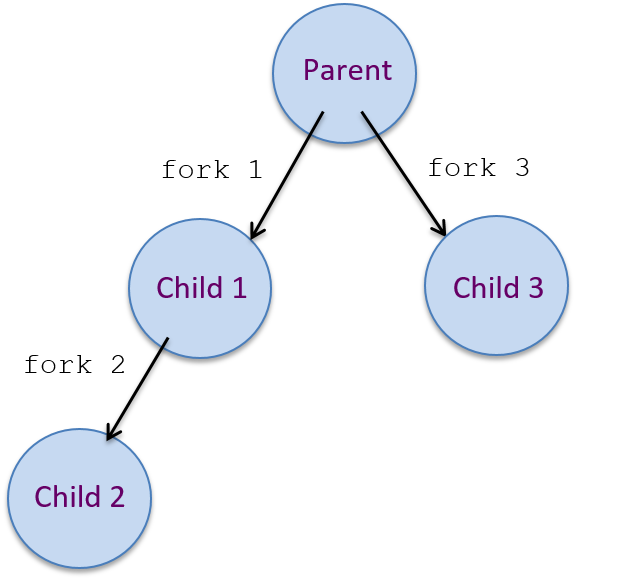13.6. Exercises
Exercises for 13.2: Processes
-
Consider the code snippet below with calls to fork (and with error handling code removed just for readability sake):
pid_t ret;
printf("A\n");
ret = fork();
if(ret == 0) {
printf("B\n");
ret = fork();
if(ret == 0) {
printf("C\n");
}
printf("D\n");
} else {
printf("E\n");
ret = fork();
printf("F\n");
}
printf("G\n");-
Draw the process hierarchy created by executing this code.
-
For each process in the hierarchy, indicate its output sequence (the order in which it executes printf’s).
Solutions
If your browser supports hidden solutions, click here to reveal them.
-
For the code snippet:
int ret; printf("A\n"); ret = fork(); // fork 1 if(ret == 0) { printf("B\n"); ret = fork(); // fork 2 if(ret == 0) { print("C\n"); } printf("D\n"); } else { printf("E\n"); ret = fork(); // fork 3 printf("F\n"); } printf("G\n");The process heirarchy created by executing this code (the specific fork call that creates each process is annotated on each edge in the process heirarchy):

For each process in the heirarchy, indicate its output sequence (which printf’s it executes in which order):
parent: A, E, F, G child1: B, D, G child2: F, G child3: C, D, G
-
Early Access Interactive Process Questions
Exercises for 13.3: Virtual Memory
-
Early Access Interactive Virtual Memory Questions